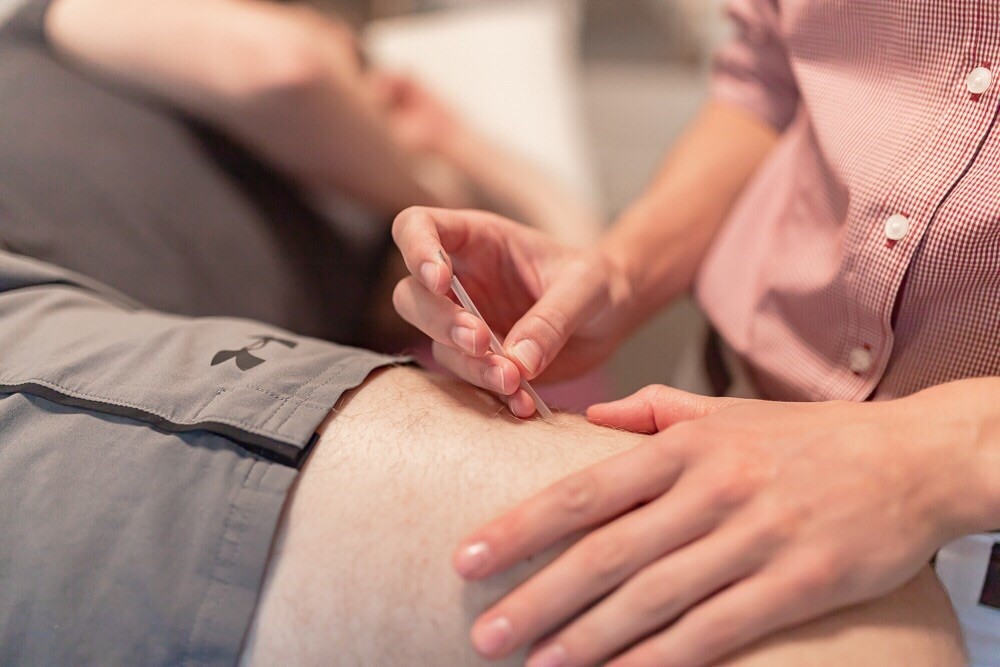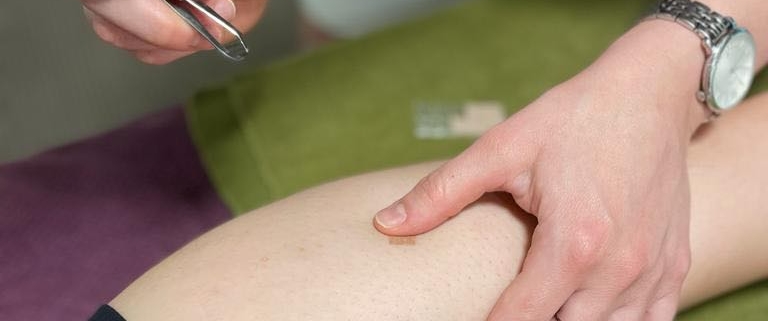Should I try Dry Needling?
Here at Barefoot Physio we use a variety of techniques to get the best results for our clients. We often incorporate dry needling as part of our treatment plan because it has a wide variety of benefits. This is always done in consultation with our clients. In this blog, we’ve covered some of the most common questions we get about needling to help you work out if dry needling is right for you.
What is dry needling?
Dry needling involves inserting very thin, single use needles into a specific location in the body to elicit a response. It is named “dry” needling as the needle does not contain any fluid. This is unlike a medical injection (eg a cortisone injection) which would be considered “wet needling”. Dry needling should only be performed by a qualified health professional who has done further training.
Is it the same as acupuncture?
Acupuncture is an entire treatment methodology that comes from Traditional Chinese Medicine. To be an acupuncturist typically requires a 4 year training program. Dry needling (also referred to as Western dry needling) is just one technique from within acupuncture that other allied health professionals (eg physiotherapists, podiatrists or massage therapists) can perform safely after further training. Traditional acupuncture uses meridian lines and the focus of treatment is on the flow of energy (qi) throughout the body.
While Eastern acupuncture can be used as part of a treatment plan for musculoskeletal problems, it is more commonly used for overall wellbeing. Including stress management and can even be helpful in the treatment of morning sickness. On the other hand, dry needling typically focuses on trigger points within muscles and is used for reducing muscle tension. As a result, dry needling also often uses longer needles. At Barefoot Physiotherapy we mostly use Western techniques though occasionally Eastern techniques are used to support treatment as well.
How does dry needling work?
Dry needling works using a number of mechanisms:
- Local (where the needle goes in): needling initiates a small local inflammatory response. There is also release of local endorphins (feel-good chemicals). Increased local blood flow also helps bring nutrient rich blood and clear waste products. Sometimes a muscle twitch occurs resulting in changes to calcium channels in the muscle fibres and subsequent relaxation of the muscle
- Segmental (at the spinal cord) effects: Enkephalin (an endorphin) is released which acts as a pain relief. Pain gating also occurs, which is when information from the needle insertion overrides other information from the area. (think of how you rub your shin if you hit it on a coffee table)
- Extra-segmental (at the brain) effects: A number of chemicals are released including serotonin, adrenaline and endogenous opioids which help to reduce pain felt in the whole body (not just the area where the dry needling occurs).
- Sympathetic effects: Needling can stimulate the autonomic system and reduce the sympathetic nervous system (“fight or flight”) activity and increase the parasympathetic nervous system (“rest and digest”) activity
- Immune effects: Enodgenous opiods that are released can support regulation of the immunoinflammatory.
What conditions is dry needling helpful for?
Knowing that it can help reduce muscle tension as well as provide a host of overall benefits, dry needling can be useful for a variety of conditions, including:
- Back pain
- Neck pain
- Rotator cuff injuries
- Nerve pain and problems
- Shoulder bursitis and other shoulder pain
- Hip pain
It is beneficial for both new and persistent (long term/chronic) problems.

What should I expect with dry needling?
Before getting dry needling, your therapist should ask some general questions about your health to ensure it is safe for you to receive dry needling. They will then explain what is going to happen and gain your consent. Then, the area that is being treated needs to be exposed so that the needles can be inserted directly into the skin (going through clothing is an infection risk). For many body parts, such as your calf, it may already be safely accessible. However, for an area such as your glute or hip, your therapist may need to move your shorts to gain access. Once the area is prepared then treatment can begin.
Types of Dry Needling Techniques
There are a number of dry needling techniques that may be used. Most commonly, needles will be placed into the muscle and left in for approximately 5-10 minutes.Iideally waiting for the muscle to relax before removing them. It is common to feel a dull ache or tugging sensation and your muscle may even twitch. Another option, especially for muscles around the lungs where extra safety precautions are necessary, needles may be inserted and moved around searching for the “twitch” response in the muscle and then removed once that has been achieved. Both of these techniques are effective but one may be more suitable depending on your condition or the body part being treated. For both of these, potential treatment side effects are an achy feeling in the muscle and potentially a small bruise in the area.
Press Stud Needling
Another treatment option we are using more often at Barefoot Physio is press studs. These are small needles that are attached to a small plaster and are left in for up to 3 days. The needles can be used in the area of symptoms or where treatment is being focused. They work on the neurophysiology model of providing stimulus to an area of tissue to help change the information going to the brain. This in turn, helps to reduce the ‘threat level’ assessment in the brain and consequently reduce overall pain and symptoms. Press studs can be effective for a variety of conditions, including chronic or persistent pain as well as acute injuries.
If you want to know more about dry needling discuss it with one of our physios today. Book in online here.








Leave a Reply
Want to join the discussion?Feel free to contribute!